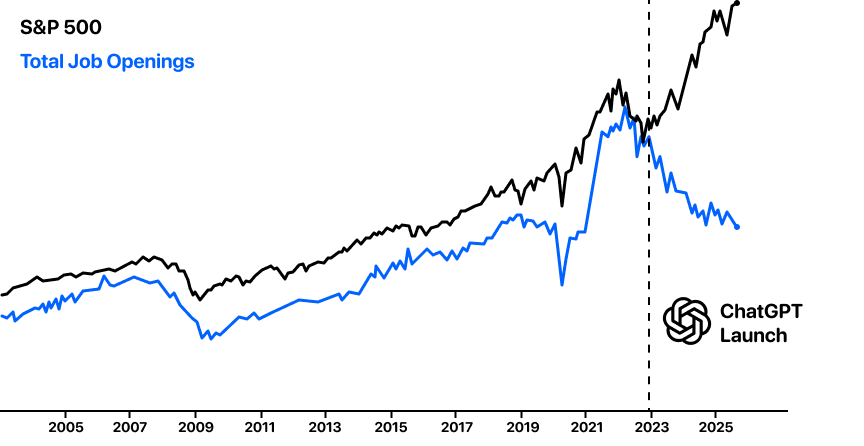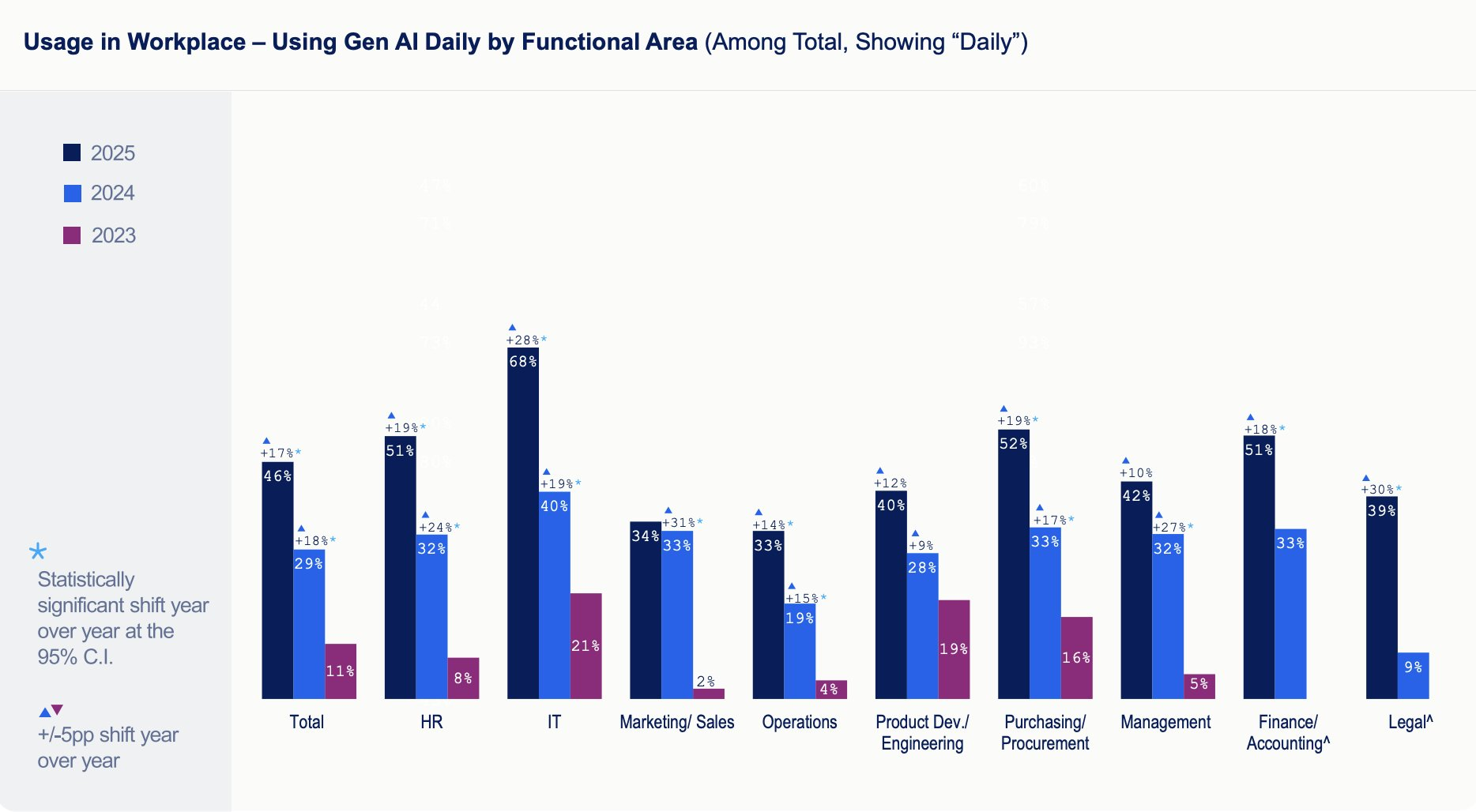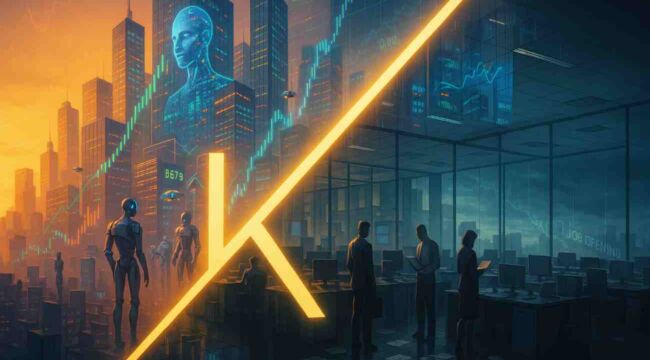One Little "K"... And The End of America
A disturbing chart is making waves in the financial world.
It’s a long-term view of job openings (blue) vs the S&P 500 (black). The dotted line shows when ChatGPT launched in November of 2022.
Take a look:

Digesting this chart gives me heartburn.
As you can see, historically job openings and the stock market have moved in parallel. When the economy was good, both metrics moved up. When it was bad, they fell.
But in November of 2022, this relationship snapped like a twig. That’s when OpenAI released its groundbreaking ChatGPT app.
Ever since, job openings have plummeted while the S&P 500 soared to new highs.
AI has simultaneously caused a stock bubble and cratered job openings.
AI stocks have levitated the market with their gains, while the same technology is ripping apart the job market.
Entry-level positions are especially vulnerable to AI, but it’s disrupting the entire white collar job market.
This is our new K-shaped economy.
The Godfather of AI’s Latest Warning
The top 4 American AI spenders alone (Google, Amazon, Meta, and Microsoft) plan to spend $420 billion on infrastructure in the next year. That’s mostly GPUs, data centers, and power generation.
Nearly half a trillion dollars, from just the top 4 U.S. companies… That’s up from $360 billion this year. Globally, AI spending over the next year will surely surpass $1.5 trillion.
The “Godfather of AI”, Geoffrey Hinton, says this level of spending can only be justified by replacing humans:
“I think the big companies are betting on it causing massive job replacement by AI, because that’s where the big money is going to be.
… I believe that to make money you’re going to have to replace human labor.”
It does seem like the only logical explanation.
Of course, there’s a chance that Big Tech is overspending, and AI will fail to replace a large number of workers. Let’s all hope for that outcome.
But we must prepare for the outcome where AI wins. This technology is only a few years old and already more competent than the average person at many tasks.
The tech has steadily improved, and with so much at stake, further breakthroughs are inevitable.
Just an Adjustment Period?
Some will argue that this is simply an adjustment period. That eventually the market will work its magic and adapt to the new reality, finding new opportunities for those displaced by AI.
A common rebuttal to the AI disruption theory is that tractors displaced farmers, and it all turned out fine because those farmers went to work in factories and other jobs created by the economic shift.
But when tractors revolutionized farming, it was anything but a smooth transition. In 1910 there were perhaps 1,000 tractors in the world. By 1930 there were 900,000.
The farm work that previously took dozens of men suddenly took 2. Most farm workers had to find new lines of work. If they were lucky, they got a job at a factory. But this involved moving to a new area, and all the expenses and difficulties associated with it.
So while from our modern view, the transition from manual farm labor to automated seems simple, in reality it was a long difficult transformation of the world’s workforce.
3 Years In
We are only 3 years into the AI disruption. And compared to previous technological breakthroughs, like the tractor, this one is happening much quicker.
The chart below shows results of a Wharton study on AI adoption among corporate executives. Today 46% of execs report using AI daily. That’s up from 11% in 2023 and 29% in 2024.

Source: Olivia Moore
As you can see, fully 68% of IT workers are using AI on a daily basis, up from 21% in 2023. And 39% of legal workers are now using AI every day, up from just 9% last year.
The next big step in AI is “agents” – autonomous AI workers capable of taking a task from start to finish with little oversight.
AI agents are not quite at the stage where they can outright replace human workers. But they can already augment productivity, and allow one person to do the work of two or three.
Make no mistake. Widespread disruption is coming. Those who utilize AI well will become super productive. Those who don’t risk falling behind, or even being laid off.
Eventually, I’m sure the economy will adjust to this new reality and find productive ways for all workers to contribute. But we don’t know how long that’s going to take.
Every great technological leap begins with a breakthrough. The loom, steam engine, tractor, and computer. Each improved the world in time, but came with a difficult adjustment period.
AI could end up being the most disruptive of all. An unprecedented reallocation of the world’s workforce, compressed into a single decade.
So for a while, the white collar world is going to see serious disruption. For many young people today, a blue collar path may be a better choice. The era of “everyone should go to college and get a desk job” is ending.
My 16-year old wants to enter the trades, maybe even start his own operation, which I fully support. It’s going to be a while before robots can handle most blue collar work.
And in the long run, this shift will probably be a good thing for the world. We need to get back to building and producing things. More welders, and less email jobs.
Yes, it’s going to be painful. But eventually we’ll end up at a place where algorithms are handling the bulk of busywork, and humans are doing creative and productive real-world tasks.
In time, it will work itself out. But for a while, it’s going to seem like the end of the world as we know it.



Comments: